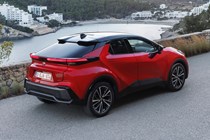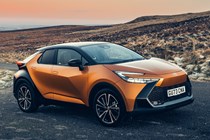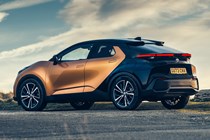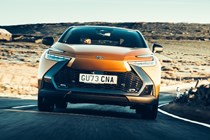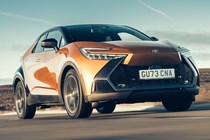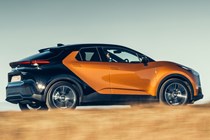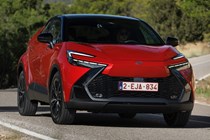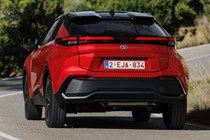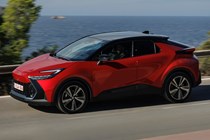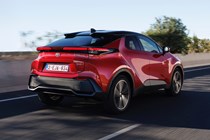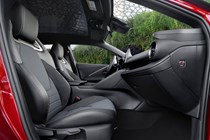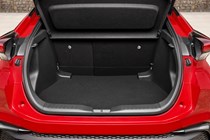
Toyota C-HR long-term test
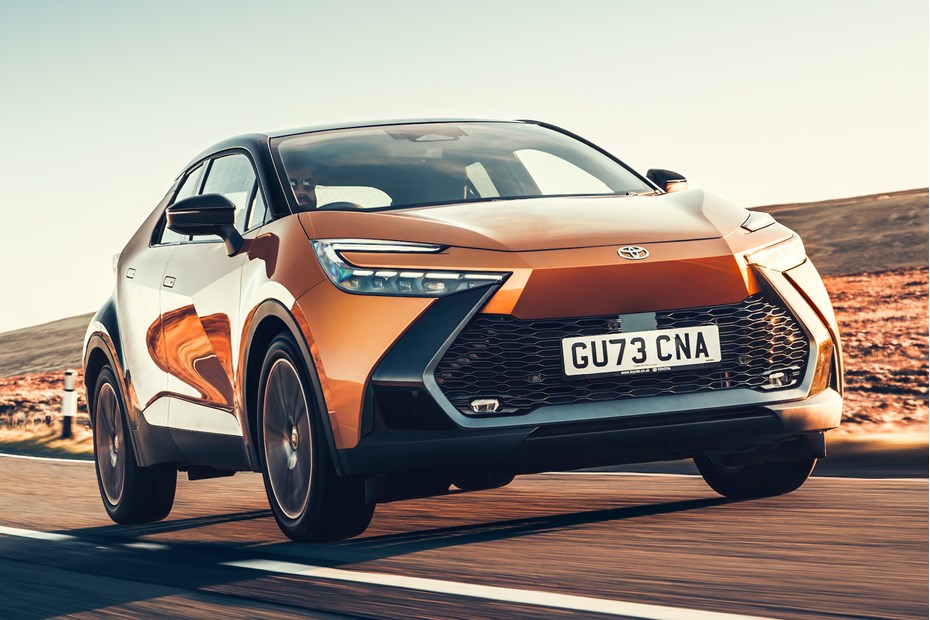
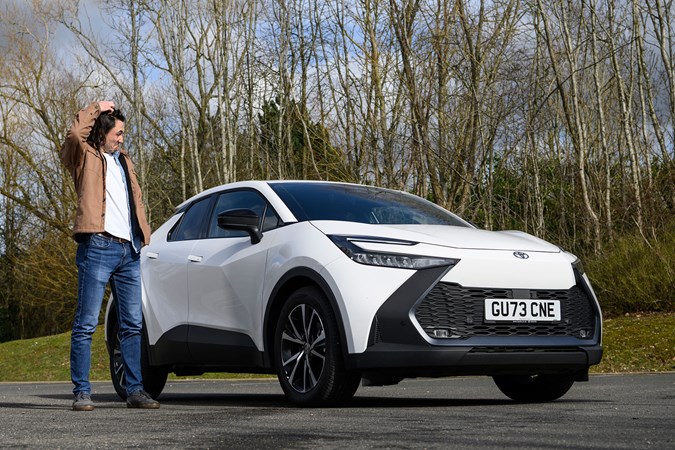
Our Deputy Editor, Luke Wilkinson, will be running a Toyota C-HR for the next six months. Its efficient hybrid powertrain might just suit his long-distance mileage demands, but does it offer anything else to capture his attention? Scroll down to find out.
Update one: Welcome
As you can probably tell from my confused facial expression in the header image above, the Toyota C-HR isn’t really my sort of car.
Yes, I appreciate that’s a terrible way of opening a new long-term report but, before I decided to take that stance, I’d stared at a blank page for more than hour searching for a jumping-off point.
This isn’t the C-HR’s fault. I mean, I’m a keen driver and a staunch anti-SUV activist. Plus, I have an irrational fear of nearly all driver assistance technology and I’m still yet to find a CVT-equipped powertrain that hasn’t forced me into a spiralling state of depression.
So, because of my own shortcomings, the C-HR does little to excite me. However, I can understand how other drivers (with less exacting and prescriptive standards) could find it very attractive indeed.
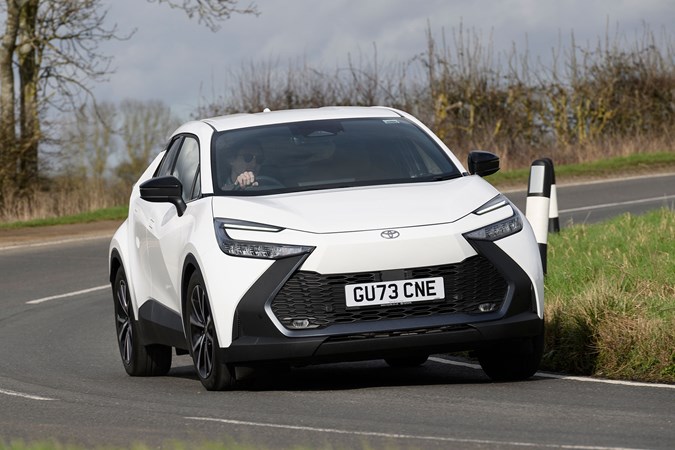
It shares the Corolla’s unrelentingly indestructible running gear, it can achieve an easy 50mpg in the real world, it’s brimming with equipment and, if you service it at a main Toyota dealer, you can have it with an industry-leading 10-year warranty. With your sensible hat on, it makes an awful lot of sense.
Toyota’s customers seem to think so, too. The previous-generation version of the C-HR racked up more than 840,000 sales in Europe alone – and Toyota is hoping the cosmetic and technological improvements it’s made to this new model will be enough to drive those sky-high figures into the stratosphere.
But are the changes enough to win me over? For the next six months, I’ll be living with this C-HR, bringing you regular updates on everything that delights and frustrates me. And I promise I’ll leave my high horse in the stable for as long as I can.
Tell us more about your C-HR’s specs
The C-HR I’m running is trimmed in Toyota’s middling Design specification. If you can resist the urge to fiddle around with the car’s options list, it’ll cost you £34,695. I’ll admit, that sounds rather expensive when you compare it to a £20,000 Dacia Duster Extreme or a £30,000 Skoda Karoq SE L. Just remember that the Toyota comes with a hybrid powertrain as standard, which jacks up its price.
Even so, there’s no avoiding the fact that the C-HR’s rivals are better value. The Karoq SE L, for example, features all the interior technology you get on a C-HR Design, along with a heated steering wheel and plush microsuede upholstery for £4,000 less.
Toyota’s counter argument is that you’ll see back the extra money you spend on the C-HR in fuel savings. But I’ve done the maths and, even after 60,000 miles of driving, you’ll only spend an extra £1,750 on fuel for the Skoda. That isn’t enough to offset the C-HR’s higher purchase price.
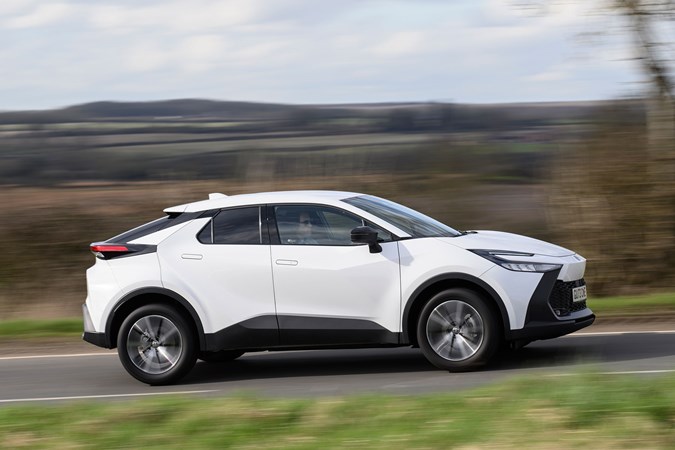
But I can feel myself getting dangerously close to saddling my horse, so I’ll focus on some of the things I like about the C-HR. Namely, its interior. I’m very fond of the way the dashboard wraps around the driver and I’m particularly grateful for the Design model’s larger 12.3-inch infotainment system and wireless Android Auto connectivity.
It works seamlessly, which is great if you’re like me and love using Waze for navigation. Once you’ve paired your phone to the car, the connection is automatic – and it’s proved very reliable thus far. I reckon it’s worth splashing the extra cash for this upgrade alone.
Design-spec cars also come with a wireless smartphone charger as standard. This is a great idea in principle, but I’ve found it to be a bit of a white elephant. It isn’t powerful enough to reliably shove electricity through my phone case and into my device. That means the charging is intermittent, which means my phone screen flashes like a rave torch as it constantly connects and disconnects from the charger.
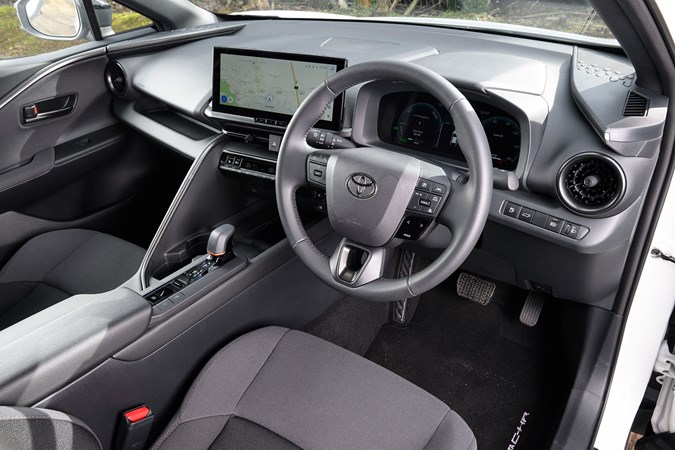
The ranch beckons once again, though, so I’ll move on to the C-HR’s engine. It’s a 1.8-litre self-charging hybrid powertrain with 140hp. Toyota says that’s enough for a 0–62mph time of 10.2 seconds. More importantly, however, the C-HR has an official WLTP fuel economy figure of between 57.6 and 60.1mpg – and I’ll be keeping a close eye on its performance over the coming months.
Before I launch into some initial driving impressions, I’d like to make one last observation about my C-HR’s spec – and I reckon it’ll be salient if you’re shopping for one. I really wish Toyota had painted it a better colour.
Take a look at the burnt orange car in our main Toyota C-HR review gallery and tell us that two tone paint finish doesn’t look a million times better than the drab shade of Hotpoint white my long-termer is finished in.
The C-HR is quite a funky shape, so I think it’s important that it’s finished in a colour that celebrates that. This single-tone finish completely masks the car’s exciting lines and, as I’ll now explain, the rest of the car isn’t interesting enough to make up the shortfall.
Okay. Can you elaborate on that?
In March 2024, I attended the European launch of the Toyota C-HR plug-in hybrid. While I was there, the company’s product team walked me through their intentions for the car.
They said their goals for the C-HR were to make it look good, to make it efficient and to make it good to drive – in that order. Toyota knew its target audience would be more concerned about styling, technology and efficiency than it would an engaging driving experience, so it built the car to suit.
Now, to be clear, I have absolutely nothing wrong with that. That approach makes great business sense. However, it also means the C-HR has very little character – and that means the entry-level models can feel a little boring, especially if you forgo the fancy tech and snazzy paint finish.
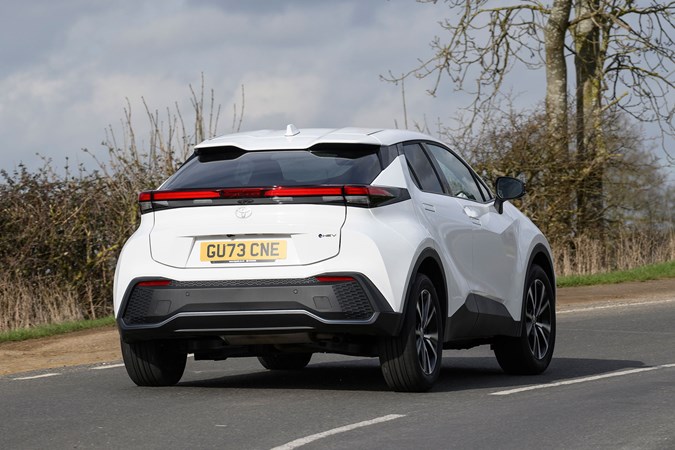
I’ve covered around 1,000 miles in the C-HR so far and, although they’ve all be very comfortable and efficient, they’ve also been rather forgettable. The two main emotions I’ve felt are disappointment from the car’s clinical steering system and frustration from the driver assistance tech that you can’t turn off unless the car is stationary.
For the time being, rivals such as the Ford Puma and Skoda Karoq seem far more appealing to me – but maybe that’ll change in the coming months. At least I haven’t spent a lot of money on fuel. Every cloud and all that.



